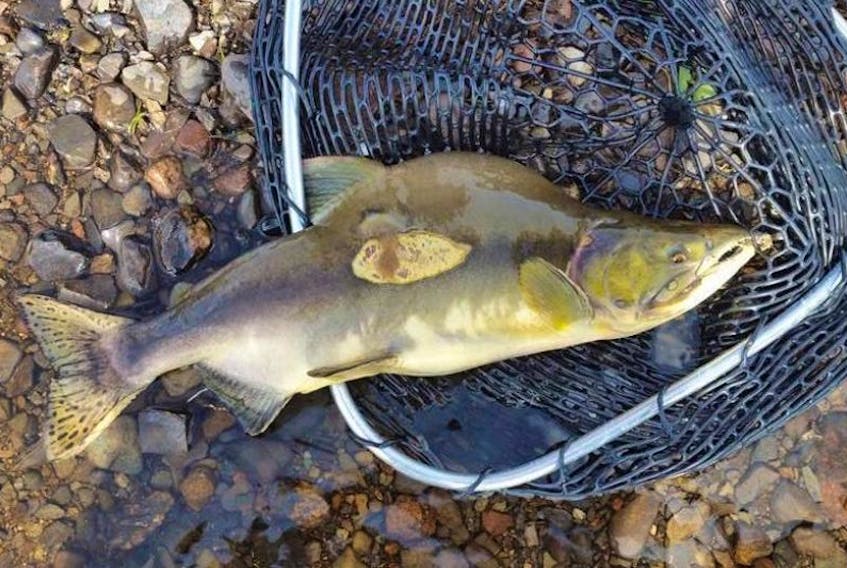The presence of Pacific salmon in Newfoundland and Labrador rivers have cast a new light on a failed project.
Last fall, three pacific salmon were found in provincial waterways – one on the Gander River and two at Sand Hill River in Labrador. DNA testing is still months away from providing answers, but there are numerous theories about where the foreign fish came from.
One theory circulating is the salmon are the progeny of Pacific fish eggs transplanted to Avalon’s Peninsula’s North Harbour River, St. Mary’s Bay, in the late 1950s and early 1960s. There could be some merit to this theory as followup research indicated the salmon were moving west. There were even reports of Pacific salmon being found in Labrador rivers. Whether or not the theory proves true is yet to be determined, however, it does generate a new curiosity about what was essentially a side note in Newfoundland’s fishery history.
Much of the background can be found in the 1975 “Evaluation of the Transplant of Pacific Pink Salmon (Oncorhynchus gorbuscha) from British Columbia to Newfoundland," by W.H. Lear. In his report, Lear stated the prep work began in 1958, at the request of the Newfoundland Wildlife branch, and was backed by the Fisheries Research Board of Canada. The goal was to establish a commercial fishery, to bring about economic diversification.
Pink and Chum salmon eggs were recommended for the transplant, as the foreign fish would need little to no food in fresh water, and wouldn’t compete with native fish. Furthermore, Lear stated, the Pink and Chum were the most cold-tolerant of the Pacific salmon, which could give the species a fighting chance in Atlantic waters.
In St. Mary’s Bay, two controlled flow spawning channels were used for planting – Stump Channel was used once in 1959, but was discontinued because of heavy silting. Transplants beyond this point occurred at Herder’s Channel.
In total, five transplants were undertaken. The first transplant of 250,000 eggs in 1959, saw just one return. In 1962, 2.5 million eggs were transplanted for 49 returns.
The 3.4 million salmon eggs planted in 1964 produced 638 returns, and in 1965, 3.3 million eggs were transplanted to produce 8,500 returns. The last year for the transplants was in 1966. Out of the 5.9 million eggs transplanted, 2,426 returns were counted.
From 1969 and beyond, counts were based on the returns of progeny from the naturally spawning fish. The report indicates dramatic drops in the stock numbers on a year-over-year basis, with Lear reporting only 18 adult returns to North Harbour River in 1974.
However, the species had shown signs of branching out, as in 1973 there were six verified reports of adult pink salmon in northern Labrador, two of which were taken in river systems. But ultimately, Lear concluded, "the transplant to North Harbour River is an apparent failure.”
He wasn’t able to pinpoint an exact reason as to why the species failed to find a home in Newfoundland, but offered several potential factors, including, the predation of fry by brook trout and eels, unfavourable river surface temperatures, and the predation by herring in St. Mary’s Bay. Furthermore, the project may have also been doomed from the start, as Lear noted that initial egg transplants were well below the minimum requirement suggested (10-25 million eggs for two consecutive years).
The inadequate supply wouldn’t have been able produce populations required to maintain runs in anything below optimal environmental conditions.
The Department of Fisheries and Oceans Canada did not respond to questions on whether or not the Department continued to monitor St. Mary’s Bay for Pacific salmon or if there’s any tracking of the progeny in Newfoundland and Labrador waters at present time.









